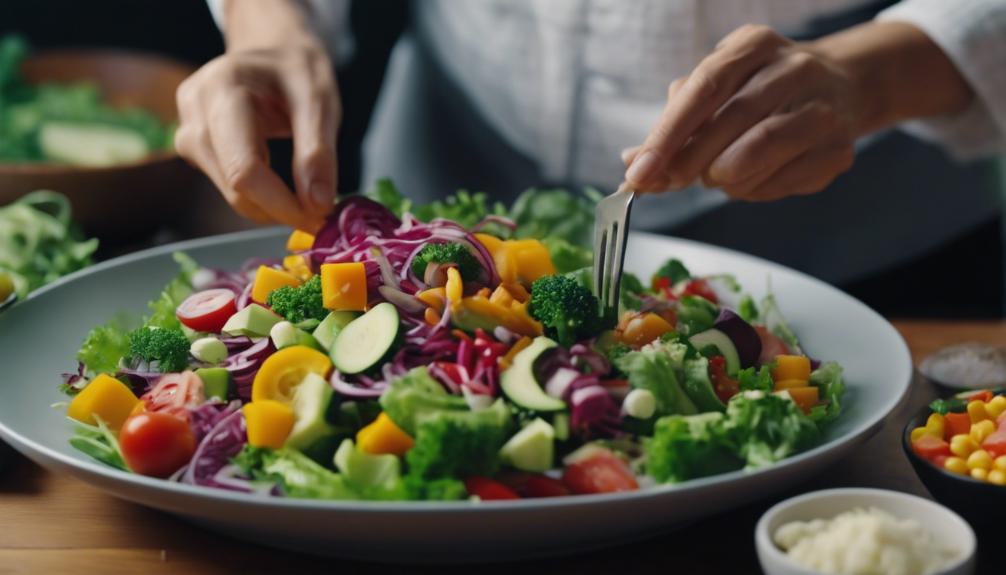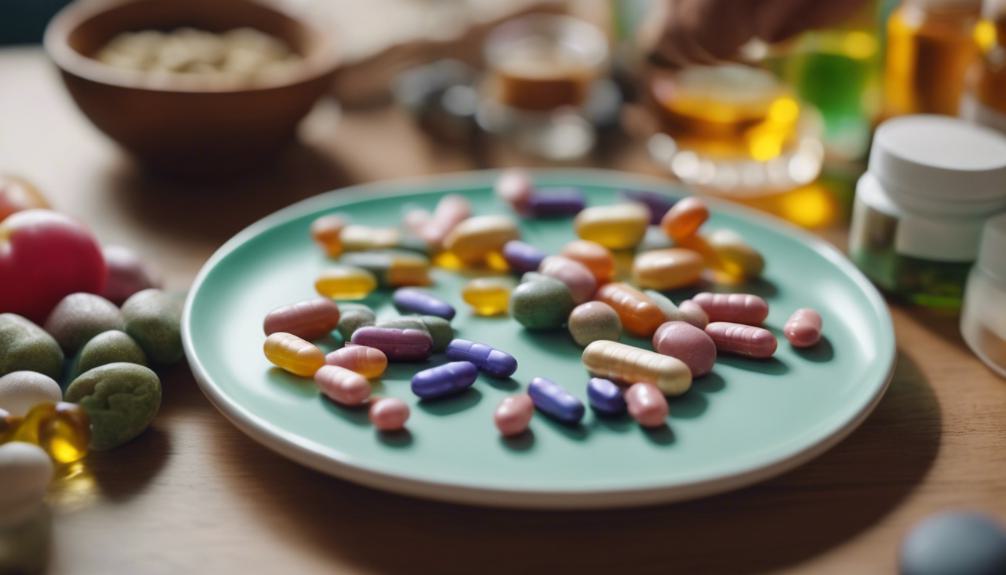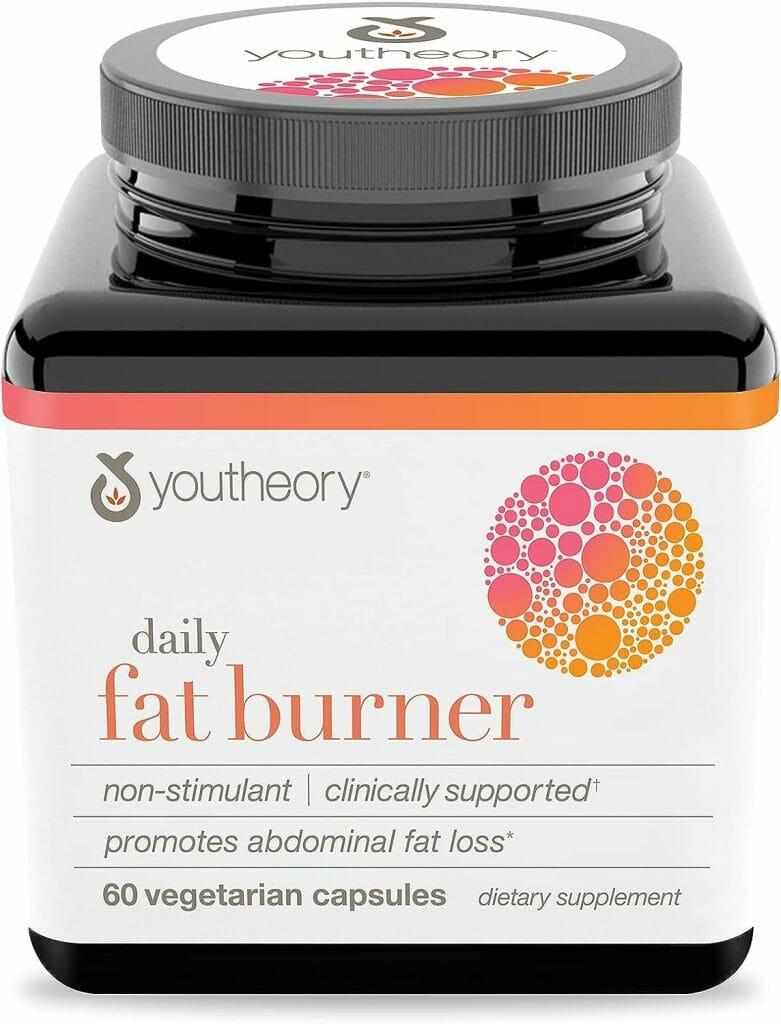After gallbladder removal, managing your weight involves monitoring fat intake. Opt for healthy fats like avocados, nuts, and lean proteins to aid digestion. Nutrient-rich foods like fruits, vegetables, and whole grains support overall well-being. Balancing fat consumption guarantees excellent digestive health. Consulting healthcare providers or dietitians for personalized advice is vital for effective weight management. Hormonal changes post-surgery affect weight regulation; focus on healthy lifestyle choices. Expert guidance and tailored dietary adjustments are key to successful weight loss without a gallbladder. Further insights reveal additional strategies for maximizing weight management post-surgery.
Dietary Modifications for Weight Loss
When aiming to shed pounds without a gallbladder, adjusting your diet becomes essential for effective weight loss. Monitoring fat intake is important post-surgery, as saturated fats can be harder to digest, potentially leading to weight gain.
Incorporating healthy fats like avocados and nuts in moderation can aid in nutrient absorption and support metabolism. These dietary modifications can help optimize your digestive system and promote weight loss.
Importance of Nutrient-Rich Foods
When managing weight without a gallbladder, emphasizing nutrient-rich foods is essential for your digestion and overall well-being.
Including a variety of fruits, vegetables, lean proteins, and whole grains in your meals can help guarantee proper nutrient absorption.
Remember to focus on balanced meal planning to compensate for the absence of bile storage and release, promoting ideal health and weight management.
Nutrient-Dense Food Choices
Selecting nutrient-dense foods is crucial for maintaining excellent health post-gallbladder removal, as they offer essential vitamins, minerals, and antioxidants.
Focus on incorporating lean proteins like chicken, fish, tofu, and legumes.
Choose colorful fruits and vegetables rich in fiber, vitamins, and phytonutrients.
Include whole grains such as quinoa, brown rice, and oats.
Opt for healthy fats from sources like avocados, nuts, seeds, and olive oil for nutrient absorption and satiety.
Balanced Meal Planning
To ensure excellent health and weight management following gallbladder removal, focus on including a variety of nutrient-rich foods in your well-rounded meal planning. Concentrate on lean proteins, fiber-rich foods, and low-fat options to support your digestive system and promote weight management. Integrate fruits, vegetables, whole grains, and healthy fats into your meals. Refer to the table below for a quick guide on balanced meal planning after gallbladder surgery.
| Lean Proteins | Fiber-Rich Foods | Low-Fat Options |
|---|---|---|
| Chicken breast | Legumes | Fat-free dairy |
| Turkey breast | Nuts | Skinless poultry |
| Fish | Seeds | Lean cuts of meat |
| Tofu | Whole grains | Avocado (in moderation) |
Managing Fat Intake Effectively

Effectively managing your fat intake is essential for maintaining digestive health after gallbladder removal. Without a gallbladder, the liver continuously releases bile, emphasizing the need to balance fat consumption.
Consistent, moderate fat intake supports bile utilization and prevents gastrointestinal issues. High-fat diets post-gallbladder removal can cause malabsorption and nutrient deficiencies.
To promote digestion and overall well-being, incorporate lean proteins, vegetables, and whole grains. Consulting a healthcare provider for personalized dietary guidance is key.
Seeking Professional Guidance
For personalized advice on weight management after gallbladder removal, consider consulting a healthcare provider or a registered dietitian. Professional guidance guarantees a customized plan that takes into account your individual needs and weight loss goals.
These experts can monitor your progress, adjust your diet as necessary, and provide ongoing support. Seeking help from a healthcare provider or registered dietitian is essential for safe and effective weight loss without compromising your health post-gallbladder surgery.
Hormonal Balance and Weight Management

Achieving weight management success after gallbladder removal involves understanding and addressing the impact of hormonal balance on your metabolism. Hormonal changes post-surgery can influence weight regulation and appetite control. Consulting healthcare providers for personalized advice is essential in managing these changes effectively. Consider making dietary and lifestyle choices that support healthy hormone levels to optimize weight control.
| Hormone Levels | Metabolism | Appetite Control |
|---|---|---|
| Impact weight regulation | Influence energy expenditure | Regulate hunger signals |
Digestive Health Strategies
When adjusting your diet after gallbladder removal, focus on consuming a balanced mix of lean proteins, fiber-rich foods, and healthy fats to aid digestion.
Remember to stay hydrated throughout the day to support your digestive system and prevent constipation.
Engaging in regular physical activity can also help maintain a healthy weight and promote overall digestive health.
Dietary Modifications for Digestion
To support your digestion and overall digestive health after gallbladder removal, focus on incorporating a low-fat diet rich in lean proteins, vegetables, fruits, and whole grains.
Make dietary modifications by increasing fiber intake gradually to promote regular bowel movements.
Avoid high-fat foods like greasy and processed items to prevent digestive discomfort.
Monitoring your diet and staying hydrated can help identify specific food triggers affecting your digestion without a gallbladder.
Importance of Hydration
Maintaining proper hydration levels is essential for supporting your digestive health, particularly after undergoing gallbladder removal surgery.
- Hydration: Essential for digestive health post-surgery.
- Preventing Constipation: Adequate water intake aids in regular bowel movements.
- Nutrient Absorption: Water helps in digesting fats without a gallbladder.
- Detoxification Support: Proper hydration alleviates post-surgery discomfort.
Enzyme Support for Weight Loss

Considering the significance of enzyme support in weight loss after gallbladder removal, ensuring efficient nutrient breakdown and utilization becomes essential. Enzymes like lipase, protease, and amylase play an important role in digestion, aiding in fats, proteins, and carbohydrates breakdown. Enzyme supplements can enhance nutrient absorption, promoting weight management.
Consult your healthcare provider to determine the right type and dosage of enzyme supplements for effective weight loss without a gallbladder.
Frequently Asked Questions
What Is a Good Diet for a Person With No Gallbladder?
For someone without a gallbladder, focus on a diet rich in low-fat, high-fiber foods to aid digestion. Emphasize lean proteins, veggies, fruits, and whole grains. Avoid greasy, processed foods to prevent discomfort.
How Can I Improve My Fat Digestion Without Gallbladder?
To improve fat digestion without a gallbladder, focus on consuming smaller, low-fat meals, incorporating lean proteins, veggies, and whole grains. Consider digestive enzyme supplements and gradually increase fiber intake. Stay hydrated for best digestion and nutrient absorption.
How Can I Avoid Gallbladder Attacks When Losing Weight?
To avoid gallbladder attacks when losing weight, focus on a gradual approach. Monitor fat intake with healthy options like avocados. Increase fiber from fruits and veggies. Stay hydrated. Include lean proteins. Exercise regularly for weight loss and gallbladder health.
Is It Harder to Lose Weight After Gallbladder?
Losing weight after gallbladder removal might be challenging due to altered digestion. Focus on a balanced diet and portion control. Stay active and consult with a healthcare provider for personalized guidance on weight management post-surgery.
Conclusion
To sum up, losing weight without a gallbladder requires careful dietary modifications, nutrient-rich foods, and managing fat intake effectively. Seeking professional guidance, maintaining hormonal balance, and focusing on digestive health are key strategies for successful weight management.
Enzyme support can also aid in the weight loss process. By following these expert tips and advice, individuals can achieve their weight loss goals while taking care of their digestive health post-gallbladder removal.








Leave a Reply
You must be logged in to post a comment.